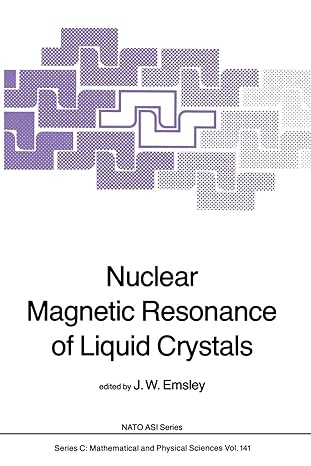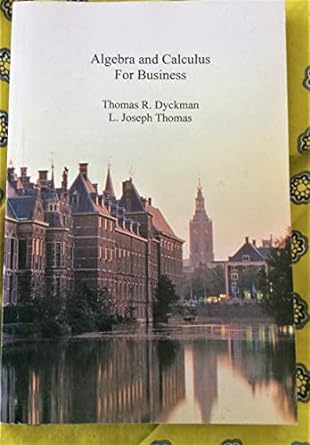Go back


Nuclear Magnetic Resonance Of Liquid Crystals(1st Edition)
Authors:
J.W. Emsley

Cover Type:Hardcover
Condition:Used
In Stock
Include with your book
Free shipping: April 13, 2024Popular items with books
Access to 3 Million+ solutions
Free ✝
Ask 10 Questions from expert
200,000+ Expert answers
✝ 7 days-trial
Total Price:
$0
List Price: $7.41
Savings: $7.41(100%)
Book details
ISBN: 9400965192, 978-9400965195
Book publisher: Springer
Get your hands on the best-selling book Nuclear Magnetic Resonance Of Liquid Crystals 1st Edition for free. Feed your curiosity and let your imagination soar with the best stories coming out to you without hefty price tags. Browse SolutionInn to discover a treasure trove of fiction and non-fiction books where every page leads the reader to an undiscovered world. Start your literary adventure right away and also enjoy free shipping of these complimentary books to your door.
Nuclear Magnetic Resonance Of Liquid Crystals 1st Edition Summary: The liquid crystalline state has been known for about a century and has been studied by many techniques. Nuclear magnetic resonance has been used to study mesophases for thirty years, but it has been in very recent years that advances in this form of spectroscopy have led to a rapid growth in its applications to the study both of liquid crystals and of solutes dissolved in them. It has become apparent that no other method of studying liquid crystals can yield such a wealth of data and it is unrivalled as a means of probing the behaviour of the molecules in mesophases. There has also been a steady increase in the study of the shape of small molecules dissolved in liquid crystals via the analysis of their NMR spectrum. In fact, the study of solutes was until recently regarded as a separate activity to the study of liquid crystals themselves, but this artificial division arose only from the gap between the large amount of information that could be derived from the spectrum of a small molecule and the rather meagre data set obtainable from the spectra of liquid crystals. This gap has, however, narrowed and it is now possible to derive a very detailed picture of the structure and orientational ordering of the large molecules typical of those which form liquid crystals. There has also been a rapid growth of interest in the liquid crystalline state.
Customers also bought these books
Frequently Bought Together
Top Reviews for Books
Yamilette Bonet
( 5 )
"Delivery was considerably fast, and the book I received was in a good condition."










